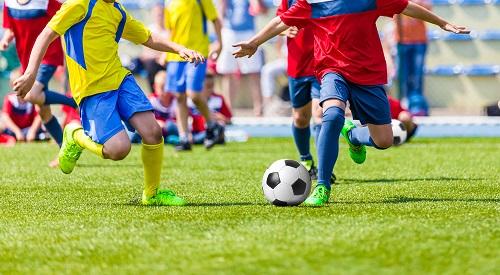

“What we have seen this past year is not only are youth sports recession proof, but they are pandemic proof,” Dan Schemm, executive director of Visit Norman in Oklahoma, told The Norman Transcript. “People are still playing basketball and soccer, and parents and grandparents are still wanting to go see their kids or grandkids play.”
While the youth sports business isn’t quite as booming as it was in 2019, Schemm predicted it will be soon. Oklahoma continues to lift restrictions and more people are receiving their vaccines.
In some cases, health experts remain skittish when it comes to returning to play; a lack of clear direction is being seen (in retrospect) as the cause.
“For months, a tangle of rules and restrictions that vary by state and sport has forced players and coaches to adapt,” The New York Times noted in mid-March. “Vaccine rollouts and warmer spring temperatures have prompted some states to lift mask mandates and loosen safety guidelines, but health experts continue to urge caution for young athletes amid the spread of possibly more contagious variants of the virus.
That kind of news hasn’t discouraged communities all over the country from welcoming back youth sports. In Wausau, Wis., for example, signups for youth baseball and softball went on as planned this spring.
“It’s great to see them come out and have a great time and not worry about anything,” Justin Sorenson, a board member for Wausau Youth Baseball and Softball, told local CBS-TV affiliate WSAW.com about players returning to the fields. “Like there’s nothing going on. We’re just normal and having a good ol’ time. They’re not worried about anything at all, other than winning.”
Sorenson said the organization plans to implement health and safety precautions in the dugouts and on the bleachers when games begin in April, and he expects even more lawn chairs than usual to be set up along the sides of the field on game days.
Bringing back outdoor sports is one thing, but indoor sports present additional layers of concern. In California, where Gov. Gavin Newsom had banned indoor youth and high school sports while allowing outdoor sports to resume, two high school student-athletes sued the governor and other local and state entities in February. They alleged violation of the 14th amendment’s equal protection clause. By early March, a settlement was reached that allowed indoor youth sports to resume with testing in counties reporting 14 or fewer new cases ofthe virus per 100,000 people, according to the Associated Press.
Indoor sports have resumed in other states, too, although mask use is a bone of contention, according to the Quad-City Times.
The New York Times pointed out that “recent data from the NFL and the [Centers for Disease Control and Prevention] found that shared transportation and meals were the most common causes of the virus spreading among sports teams.”
Susannah Briskin, an associate professor of pediatric sports medicine at Rainbow Babies and Children’s Hospital in Cleveland. told The Times that her own 11-year-old son’s soccer league originally mandated indoor mask-wearing — a policy that met with “so much backlash” that league officials dropped the rule. But because masks are still optional (and he wears one), she allows her son to keep playing.
“It was very important to have [kids] out doing social activity, and getting physical activity, but trying to encourage it in the safest way possible,” she said.

